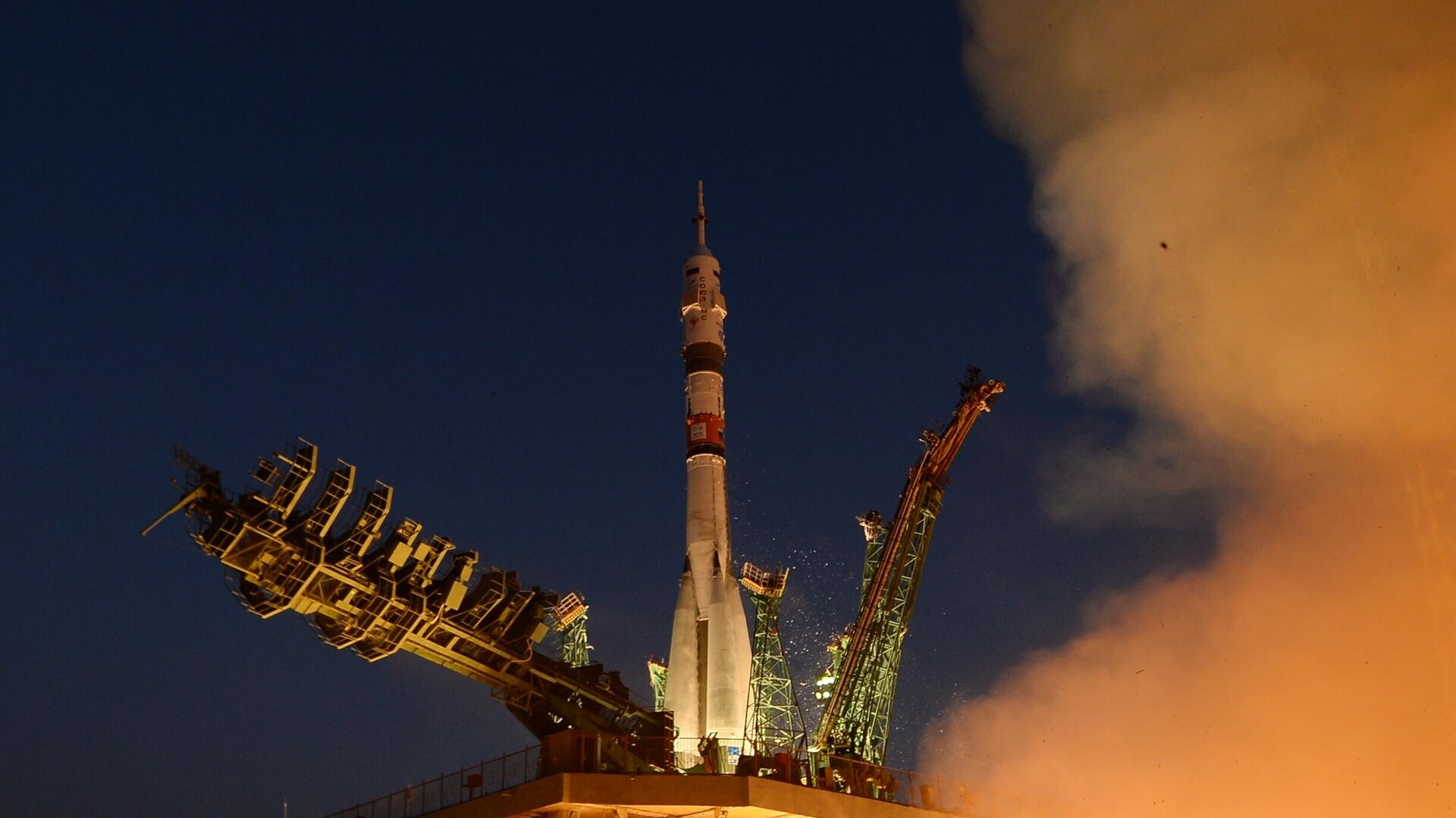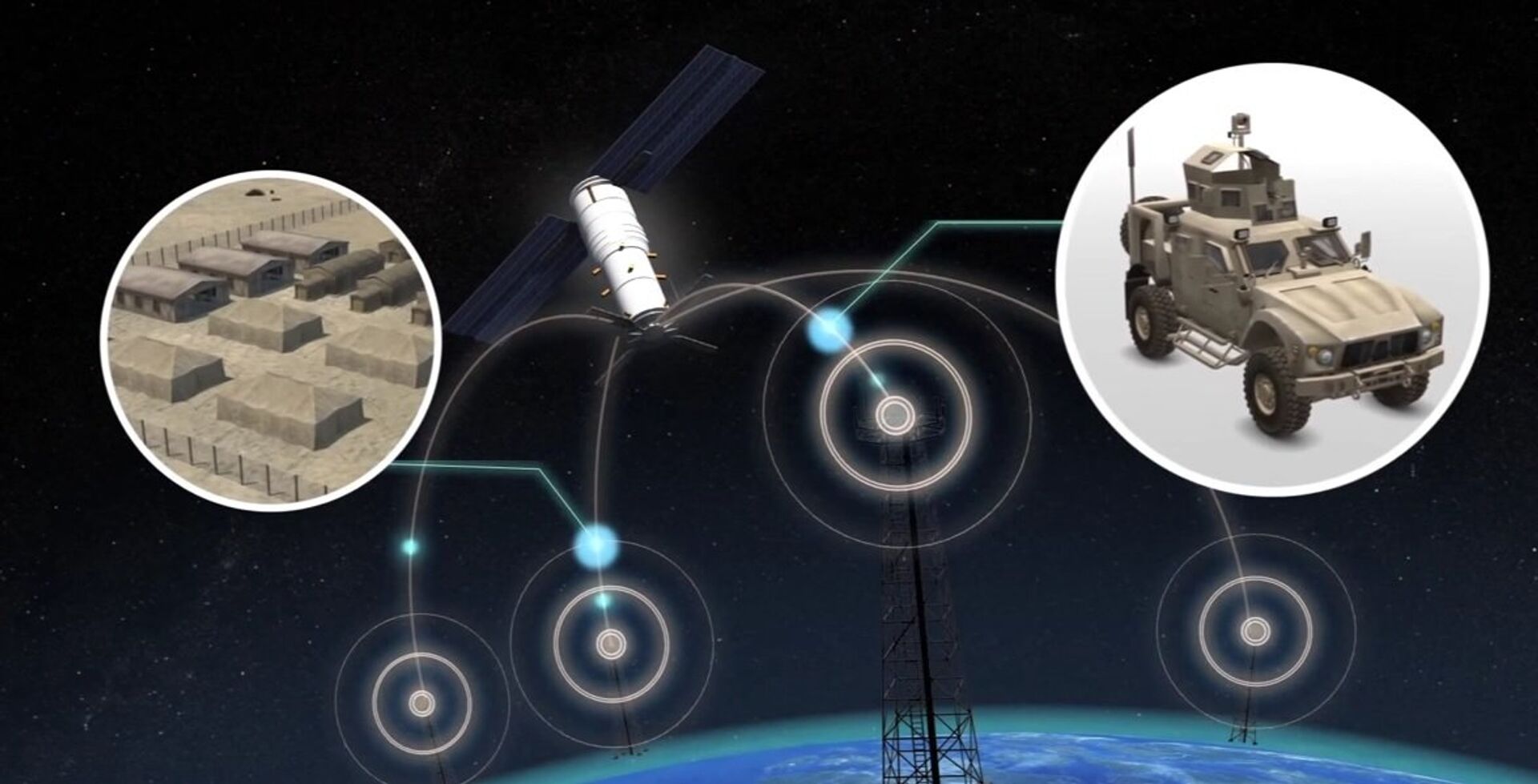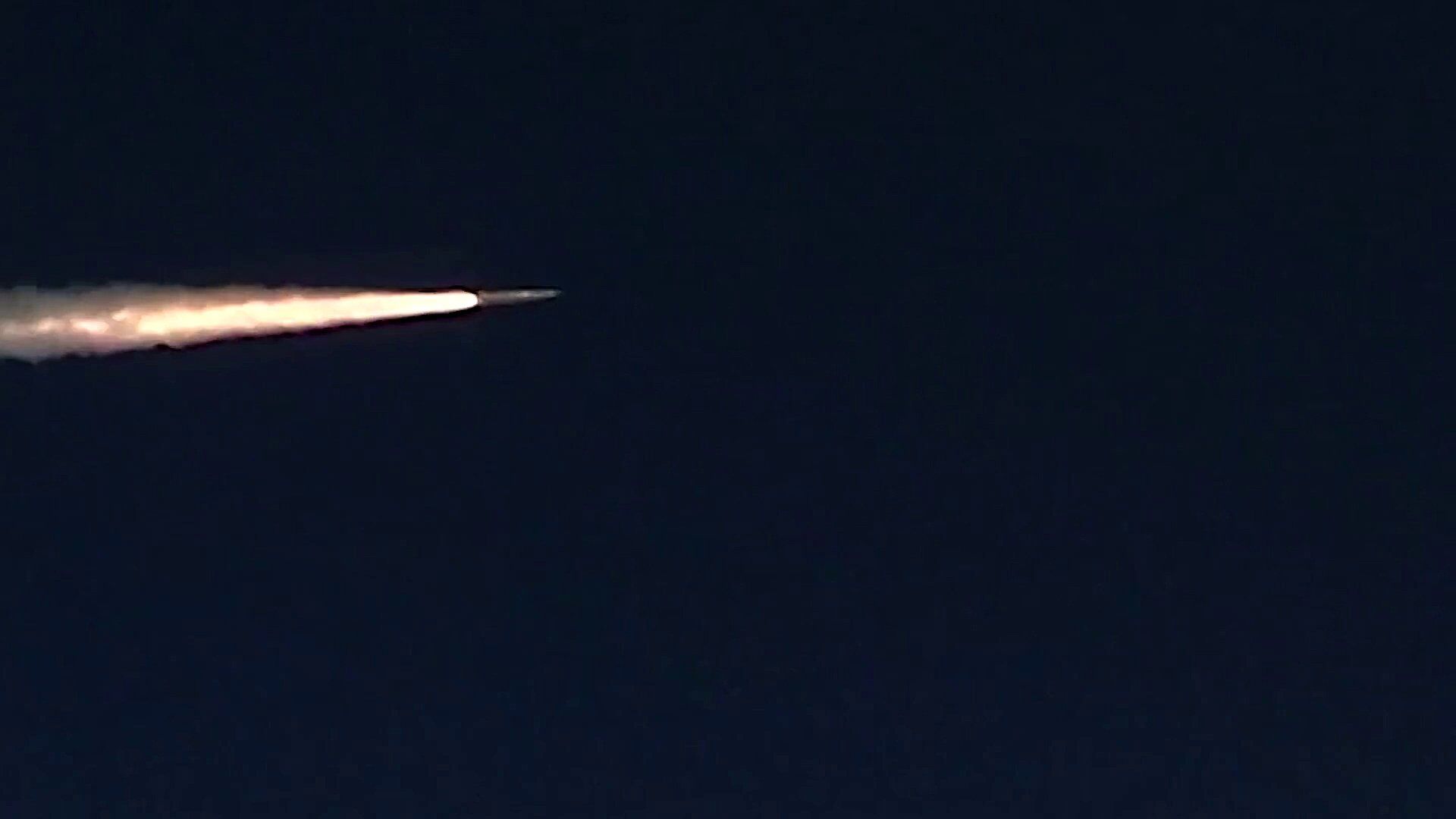Russia Takes the Battle Into Space To Seal Special Military Operation Success
20:11 01.12.2023 (Updated: 20:15 01.12.2023)

© Sputnik
/ Subscribe
With Russia recently launching satellite into space, military analyst Vijainder K Thakur, in his column for Sputnik India, explores the possible impact of space industry on the special military operation.
Introduction
On Saturday, November 25, combat crews of the Russian Aerospace Forces (RuAF) launched a Soyuz-2.1b medium-class launch vehicle carrying the Bars-M No. 5 reconnaissance satellite from the State Test Cosmodrome of the Ministry of Defense of the Russian Federation (Plesetsk Cosmodrome) in the Arkhangelsk Region.
The satellite was successfully placed in a Sun-synchronous orbit (SSO), probably at around 570 km at 97.7 degrees in inclination.
The Bars-M No.5 launch, the eighth this year of a military satellite by Russia, is illustrative of a significant ramp up in the use of Space by Russia in order to neutralise the advantage that accrues to Ukraine from the West's sharing of space based intelligence.
Since the start of the Special Military Operation (SMO) on February 24, 2022, Russia has stepped up launch of cartographic, communication, radar and optical surveillance; and electronic intelligence (ELINT) satellites. Also, Russian satellites are now closely monitoring western satellite activity and possibly making their operations more difficult by flying in close proximity!
The following is a quick overview of the Russian Ministry of Defence (RuMoD) satellites launched into orbit since the start of the SMO and their capabilities.
Bars-M
The Bars-M series of satellites are electro-optical systems placed in Sun Synchronous Orbit (SSO) for military cartography combining topographic and high-resolution Earth imaging. The Bars-M satellites are launched into orbit using the medium-class Soyuz-2.1a launch vehicle.
The large satellites are developed and manufactured by TsSKB-Progress through a contract with the Ministry of Defense of the Russian Federation. Weighing approximately 4,000 kg, they consist of three compartments: a service module, an instrument module, and a payload module.
The payload module features the Karat imaging instrument built separately by the Leningrad Optical Mechanical Association. It also hosts a dual laser altimeter for topographical data such as ground elevation. The imaging system is believed to have a ground resolution of around one metre.
The Bars-M's main instrument inside the payload module consists of a dual telescope called OEK Karat, where OEK stands for the Optical Electronic Complex. The triple-lens instrument was developed at the LOMO company in St Petersburg, which also built the main imaging system for the Persona reconnaissance satellite.
The Bars-M satellites use a SVIT propulsion system that can be found in the non-pressurized service module and is composed of the main engine and 12 attitude thrusters. Two deployable solar arrays provide electrical power to the spacecraft.
The Bars-M launch on November 25, mentioned in the introductory paragraph, was the third since the start of the SMO. Bars-M satellites were earlier launched on May 23, 2023 (Bars-M No. 4) and May 19, 2022 (Bars-M No. 3)
A total of 6 Bars-M satellites are proposed to be built. With the launch of Bars-M No. 5, Russia now has 5 electro-optical recon satellites in orbit.
In comparison, the US has 6 Keyhole EO satellites.
Liana Constellation
The Liana constellation is designed to provide targeting data to Russian missiles. It consists of two different types of satellites: Lotos-S1 and Pion-NKS.
The Lotos-S1 (14F145) satellites of the constellation are equipped with a Passive radar ELINT payload and the Pion-NKS (14F139) satellites, with an active SAR radar payload.

Russia launches Lotos-S satellite that can intercept radio signals everywhere
© Photo : Youtube/TomoNews US
The Liana system replaces its Soviet era predecessors Tselina-2 with Lotos satellites and the naval US-PM with Pion-NKS satellite.
The Liana system is a target designation system for real time targeting of adversary hardware on the ground, on water, and in the air.
Radar based surveillance and targeting operations are not affected by weather conditions, such as cloudiness, unlike optical surveillance by Bars-M satellites.
Lotos’ SIGINT payload is known as 14V120 or Bars-SM. Externally, it consists of four antennas that are mounted on the bottom of the payload section in a cross-shaped pattern.
Radio signals intercepted by the Lotos-S1 satellite help locate and characterise various military targets such as vehicles and installations. The SAR radar on Pion-NKS satellites can image targets under all weather conditions enabling target recognition.
Pion and Lotos share a common satellite platform developed at RKTs Progress in Samara and based on the company's long-running Kobalt spy satellite series.
Both spacecraft use onboard digital signal processing facilitation. As a result, they can generate and transmit targeting data directly to weapon systems, improving the effectiveness of the Liana network.
The Lotos-S1 constellation currently comprises seven Lotos-S1 satellites; Lotos-S1 No 7 (Kosmos 2570) was launched into Low Earth Orbit on October 27, 2023 from the Plesetsk Cosmodrome (Arkhangelsk region).
A few days after the launch of Kosmos 2070, Kosmos 2571 was released into orbit.
Earlier, Lotos-S1 No 6 (Kosmos 2565) was launched on November 30, 2022. On December 3, 2022, Kosmos 2565 released Kosmos 2566 into orbit. On December 24, 2022 Kosmos 2566, in turn, released an object. So far, the object has not been classified as a satellite as it could well be a piece of debris.
No one is quite sure why Lotos-S1 No 6 and No 7 released additional satellites.
There is currently just one Pion-NKS active radar satellite in orbit and it was launched into orbit before the SMO, on June 25, 2021, from Plesetsk Cosmodrome.
EO MKA Satellites
The EO MKA is believed to be a technology demonstrator optical reconnaissance spacecraft. The prime contractor for building the satellite is NPP Vniiem. The imaging sensor has been constructed by OAO Peleng which is a company located in Belarus.
On March 29, the RuAF launched a Soyuz-2.1v carrier rocket with EO MKA No. 4 (Kosmos 2568) into low earth (SSO) from the Plesetsk cosmodrome.

Soyuz-2.1v carrier rocket
© Photo : roscosmos
Earlier, on October 15, 2022, the RuAF launched MKA No 3 (Kosmos 2560) into SSO using a Angara 1.2 launcher from Plesetsk Site 35/1
A previous attempt on April 29, 2022 to launch EO MKA №2 into SSO using a Angara 1.2 rocket launched from Plesetsk Site 35/1 apparently failed because the satellite's orbit could not be raised.
Kondor Satellite Constellation
The Kondor satellites are relatively inexpensive low earth orbit Earth imaging or military reconnaissance satellites developed by NPO Mashinostroyeniya for the Russian Aerospace Defence Forces.

The launch of the Progress MS-25 cargo ship on a Soyuz-2.1a carrier rocket from the Baikonur Cosmodrome on December 1, 2023.
© Photo : Roscosmos
Weighing 1100 kg, Kondor satellites are equipped to carry either synthetic aperture radar or electro-optical imaging payloads.
The Kondor satellite features a S-band synthetic aperture radar (SAR), which can conduct both continuous swath surveys or detailed spot surveys. The swath width is 10 km. Ground resolution is 1-2 m in spotlight mode, 1-3 m in stripmap mode and 5-30 m in ScanSAR mode.
Civilian versions of the satellite have been designed under the name Kondor-FKA.
On May 26, 2023 Roscosmos launched Kondor-FKA No.1 using Soyuz-2.1a / Fregat from Vostochny cosmodrome. The launch of the second satellite is planned for 2024.
Despite being a civilian satellite, the Kondor-FKA No. 1 is credited with increased lethality of Russian cruise missile attacks in Ukraine, as also the Russian Kinzhal hypersonic missile attack on the Patriot battery at Zhuliany airport in Kyiv,on August 11.

The Russian Aerospace Forces conducts test launch of a Kinzhal hypersonic aviation and missile system
© Russian Defence Ministry
/ Rendezvous & Proximity Operation (RPO) Satellites
Russia operates Rendezvous & Proximity Operation (RPO) satellites for ELINT and inspection of other satellites. RPO satellites periodically manoeuvre in orbit and park themselves in proximity to satellites of interest.
On March 12, 2023, the RuMoD placed Olimp-K No. 2 (Luch-5X No. 2) into Geosynchronous orbit (GSO) using Proton-M / Briz-M combine.
According to Roscosmos, Luch-5X has been placed into orbit to test “advanced relay and communication technology.”
In the past, Russia used satellites with the Luch (Beam) designation, placed in geostationary orbit, for data relay between satellites.
However, in September 2014, Russia launched a satellite with the Luch designation (Luch No. 1) which has spent the past nine years traversing the geostationary belt and regularly parking itself close to commercial western communications satellites with the apparent goal of eavesdropping on them.
It's likely that Luch No. 1 and Luch No. 2 are new generation satellites that can additionally undertake ELINT tasks in addition to data relay. They are also identified by the designation Olimp (the Russian word for Mount Olympus in Greece), The satellites are built by Information Satellite Systems (ISS) Reshetnev in Zheleznogorsk (Siberia), Russia’s leading developer of communications and navigation satellites.
RPO Inspector Satellites
While the Luch satellites operate in GSO, Russia also deploys inspector satellites to physically inspect other satellites in SSO, with the intent of assessing their capabilities from their size and physical architecture. The inspector satellite can also eavesdrop on the signals being received and transmitted by the satellite under inspection.
On August 1, 2022, RuMoD launched Kosmos 2558 in to SSO close to USA-326 (NROL-87)
On October 21, 2022, RuAF launched the Inspector satellites MKA No 1 (Kosmos 2561) and MKA No 1 (Kosmos 2562) into SSO using a Soyuz-2.1v / Volga combine from Plesetsk Site 43/4.
Conclusion
Western space and air based surveillance has given Ukrainian forces an advantage over Russian forces since the start of the SMO. With accurate targeting information always on call, Ukrainian forces have been able to use NATO supplied precision weapons such as HIMARS, ATACMS and Storm Shadows very effectively.
By enlarging the size of their surveillance and targeting satellite constellations, Russia is likely to close the gap putting Ukrainian HIMARS launchers, Storm Shadow launch platforms, even Ukrainian fighters, including the yet to arrive F-16s, at greater risk.
On an aside, typical of US exceptionalism, US officials criticise Russia's use of RPO satellites despite themselves operating RPO satellites, such as the NEMESIS eavesdropping satellites and GSSAP inspector satellites.

